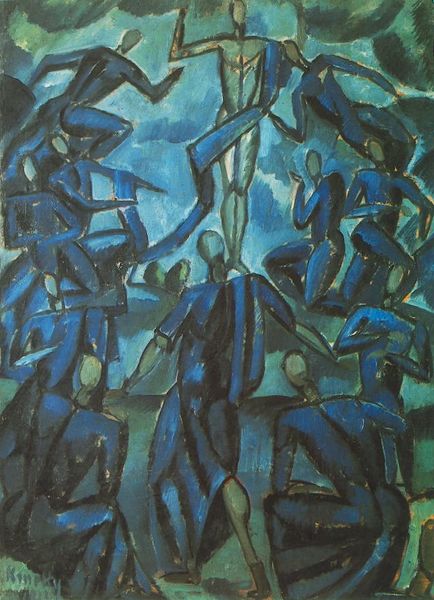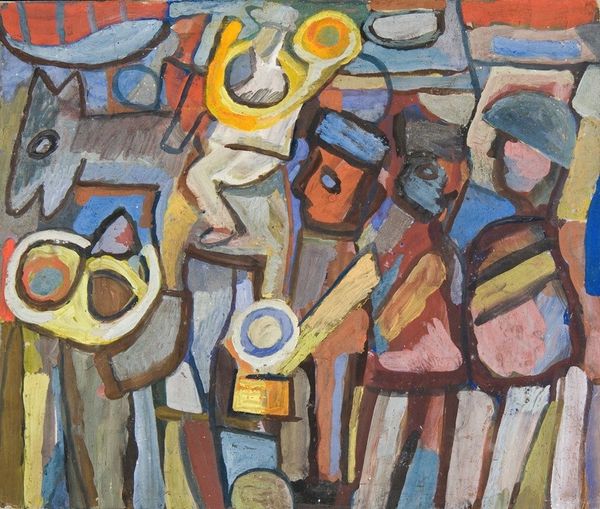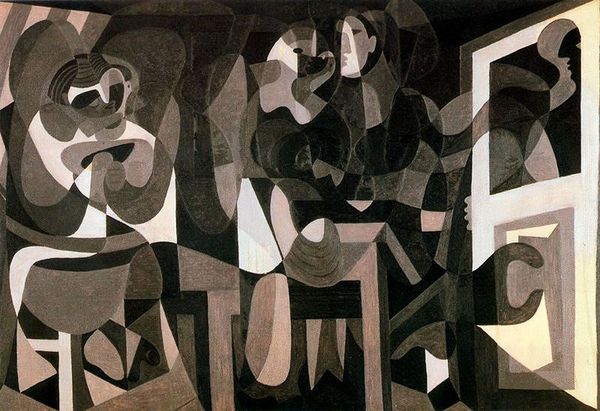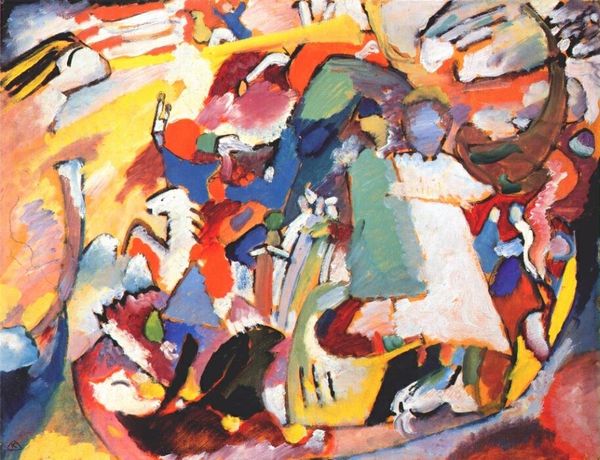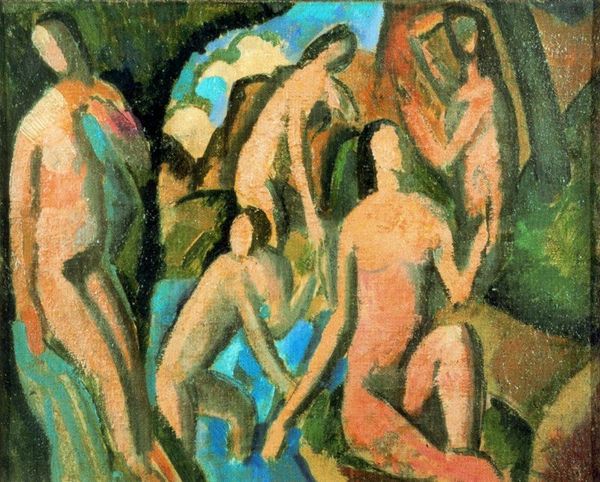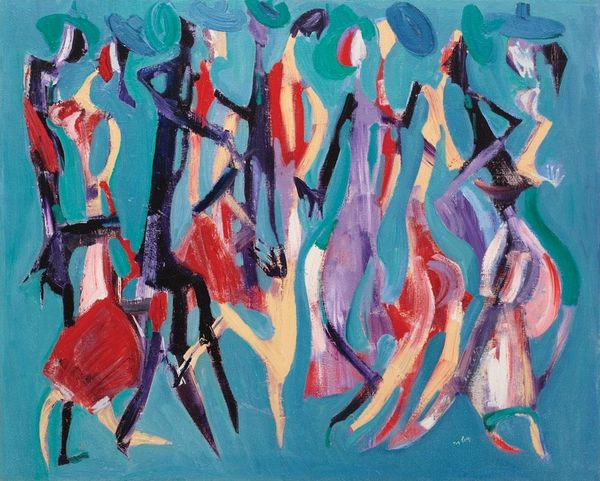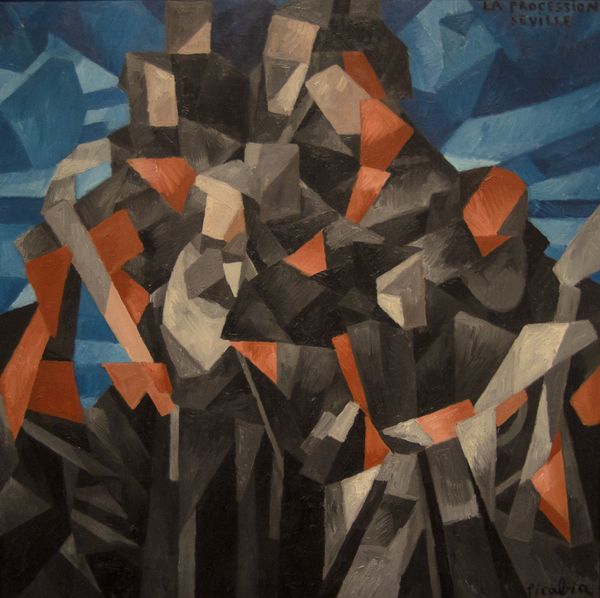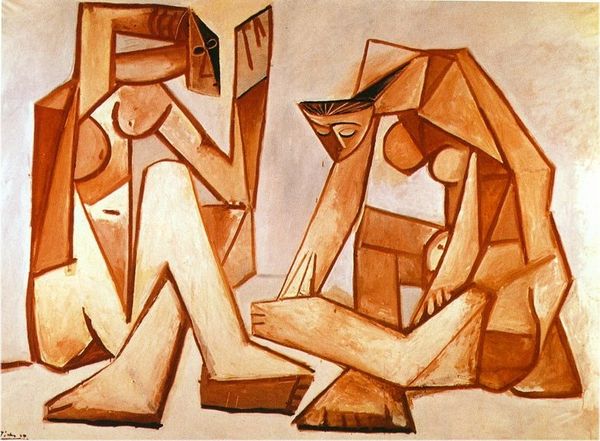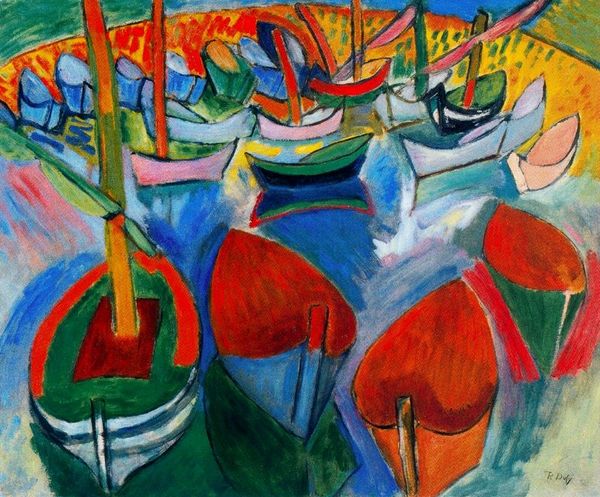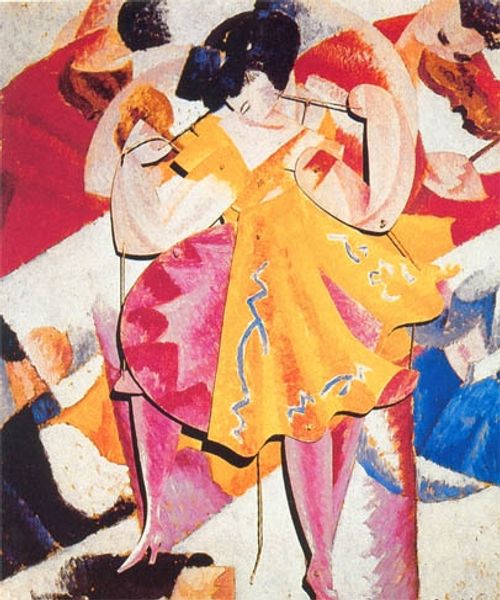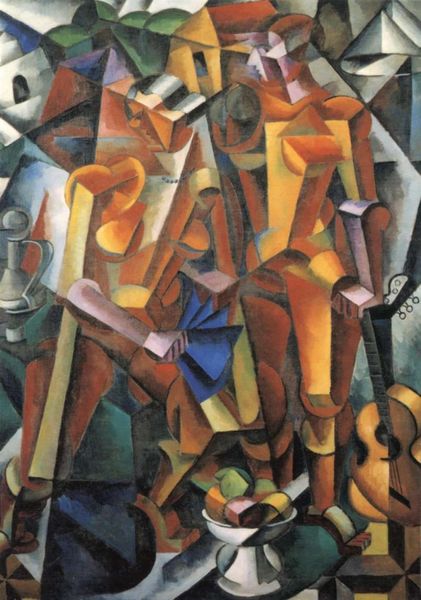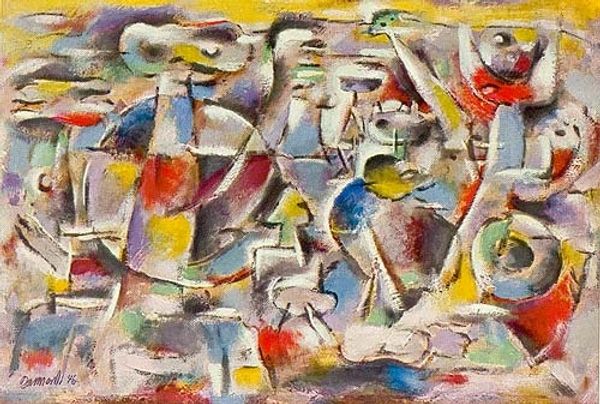
painting, oil-paint
#
fauvism
#
abstract painting
#
fauvism
#
painting
#
oil-paint
#
figuration
#
possibly oil pastel
#
oil painting
#
female-nude
#
expressionism
#
nude
#
expressionist
Dimensions: 47.6 x 58.7 cm
Copyright: Public domain US
Editor: This is Picasso's "Bathers in the Forest," painted in 1908 using oil paint. I am struck by how the figures and landscape almost seem to merge, and the use of simplified shapes creates a kind of primitive monumentality. What is your take on it? Curator: Considering this through a materialist lens, the 'how' becomes central. Picasso is actively breaking down forms, right? We must examine the material process of doing so. Notice how he's abandoning traditional modelling and shading techniques in favor of planar construction, essentially building figures and the landscape from flattened shapes. Think about the societal impact: what does it mean for an artist like Picasso to radically change accepted painting techniques? Editor: So you’re saying it's less about *what* is represented and more about *how* it's made and the implications of that 'how?' Curator: Precisely. The rough, almost brutal application of paint, the lack of conventional finish...this isn't accidental. Picasso is actively rejecting bourgeois values that emphasized skillful illusionism and idealized beauty. Consider the context of industrial production at this time – a movement away from detail and polish. This painting isn't just *of* bathers in a forest; it *is* a material manifestation of social upheaval. Editor: That makes sense. Seeing it that way connects it to bigger societal shifts beyond just art history. Is that intentional on the part of the artist, you think? Curator: Intention is tricky, but we can definitively say that his choices in materials and application actively disrupt established norms. We can understand his painting as a form of material resistance to academic traditions and an emerging mechanized world. It reveals anxieties regarding a new mode of production. Editor: Thinking about the painting in terms of labor and societal values definitely changes my understanding of it! It's much more active and challenging than I initially thought. Curator: Exactly! The way something is made is never neutral. It’s embedded with the artist’s ideas, socioeconomic anxieties, and cultural meaning. I see now I wasn't placing enough emphasis on those anxieties myself!
Comments
No comments
Be the first to comment and join the conversation on the ultimate creative platform.
